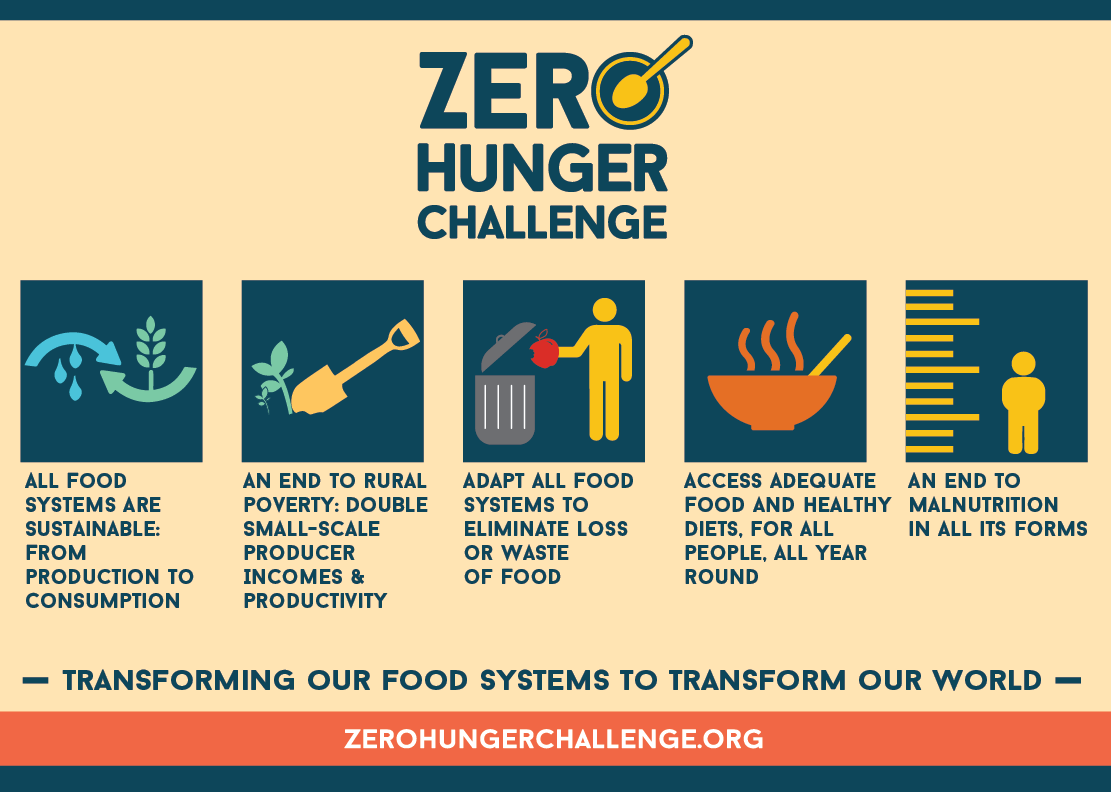
FAQ: WHAT HAS TO BE DONE TO GET TO ZERO HUNGER?
The Global Report on the Food Crises 2023 released recently estimated that between 691 million and 783 million people in the world suffered from hunger in 2022.
FAQ: WHAT HAS TO BE DONE TO GET TO ZERO HUNGER?
The Global Report on the Food Crises 2023 released recently estimated that between 691 million and 783 million people in the world suffered from hunger in 2022. While the two pandemic years did not record a growth in food insecurity, the data for 2022 shows levels far higher than 2019.
This year's report records the historic moments that had an impact on the assessment– a pandemic and ensuing economic crisis, the Ukraine conflict, soaring prices of food and agricultural inputs.
The GRFC is produced by the Food Security Information Network in support of the Global Network against Food Crises, and involves 16 partners to achieve a joint assessment of acute food insecurity in countries.
• What is food security?
Food security is defined as: "When all people, at all times, have physical and economic access to sufficient, safe and nutritious food that meets their dietary needs and food preferences for an active, and healthy life".
The prevalence of moderate or severe food insecurity in the population is based on the Food Insecurity Experience Scale.
• Key findings of GRFC?
The Report starts with the assertion that hunger is no longer on an alarming path upwards at a global level, but the world is far off track towards achieving Sustainable Development Goal 2– Zero Hunger.
New estimates of FIES confirm that for 2022, no progress was made on a global level. Following a sharp increase from 2019 to 2020, the global prevalence of moderate or severe food insecurity remained unchanged for two years.
Global hunger, by the metric of undernourishment, remained relatively unchanged from 2021 to 2022 but is also higher than pre-COVID levels.
However, stunting, among children under five years of age, has declined steadily. Simultaneously, child wasting, caused by insufficient nutrient intake or absorption, also declined. In terms of overweight children, the study indicated a non-significant increase.
The cost of a healthy diet increased by 6.7% between 2019 and 2021. It also projects that almost 600 million people will be chronically undernourished in 2030.
• Key drivers of food insecurity?
The report notes the following reasons: slowing down, due to lockdowns, economic downturns, and other pandemic related disruptions, the Ukraine war, governmental policies that may not be entirely favourable, and increasing urbanisation that drives changes through the agrifood systems.
• Solutions:
The report helps "identify vulnerable population groups, contributing to evidence to inform decision making and effective action through the appropriate targeting and design of policies and programmes".
It highlights that sound nutrition is central to achievement of SDGs and hence, it must be central to government policies as well. Policy incentives need to be provided to sellers and outlets to enable healthy food be available at affordable prices.
The GRFC also suggests building rural infrastructure, including quality rural and feeder roads to connect remote farms and enterprises, access to digital tools and water supply.
